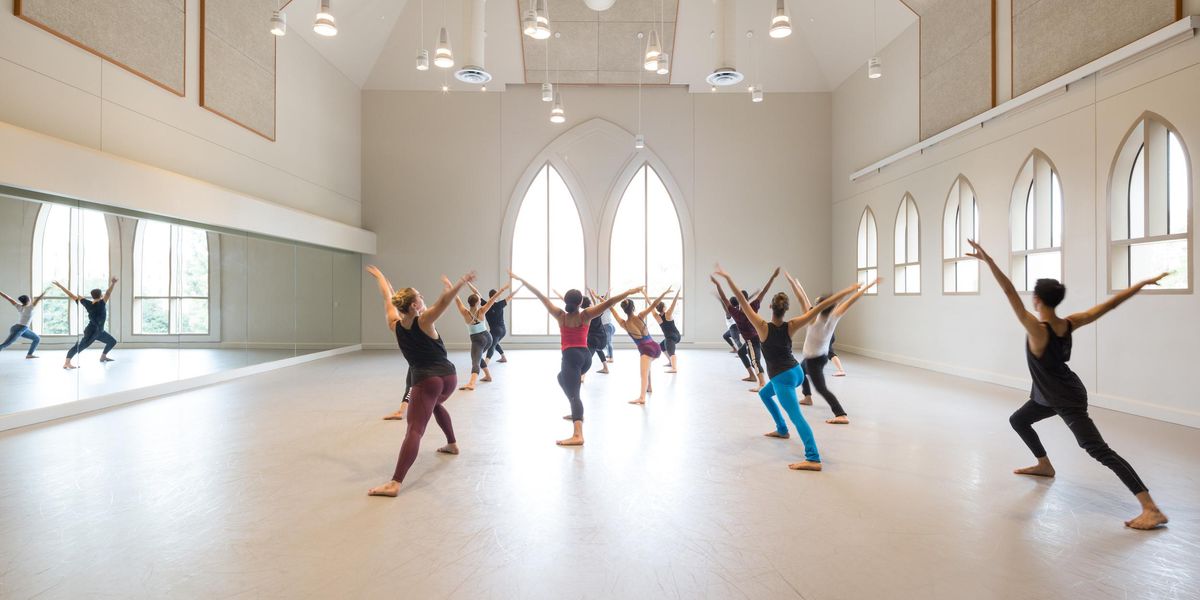Beyond Ability
Watching Dwayne Scheuneman and Keon Saghari partner is like watching contact improvisation meet parkour. She climbs up his body and balances on his shoulders as if they were just another floor. The two dart in a tight, quick circle, and then he flies across the stage, rounding each corner with dangerous speed. Rather than being seen as a limitation, Scheuneman’s wheelchair is leveraged as a choreographic tool.
Twenty-nine years ago, before “diversity” was a dance world buzzword, before the 1990 Americans with Disabilities Act was signed into law, AXIS Dance Company was making work that challenged ideas about whose bodies were capable of dancing. Now the country’s premiere physically integrated company (both disabled and nondisabled dancers perform), AXIS still leads the push for more-inclusive dance, working with choreographers like Bill T. Jones, Kate Weare and David Dorfman to create one-of-a-kind pieces that couldn’t be replicated by your average modern dance company.
Scheuneman and Nick Brentley
The headlining work of the Oakland-based troupe’s current tour, to go again by Joe Goode, explores the experiences of combat-injured veterans and their families. Goode’s signature dance-theater blend tells their stories using text from interviews conducted by the choreographer and the dancers. The performers speak and sing about the veterans’ resilience while moving through phrases that reflect the trauma of war. The dancers’ bodies hold hints of their own trauma, and suggest their own resilience as disabled movers.
“It’s very difficult to show up at a dance class and expect that it’s going to work for you, that the person teaching is not going to freak out, and will be able to teach in a way that someone like me can translate the material,” says artistic director Judith Smith, who has been wheelchair-bound since a car accident at age 17. And yet, movement has immense rewards for those who have experienced debilitating losses. Scheuneman says that after severely injuring his neck in 1995, “dance helped me understand my new body and improved my ability to navigate in a wheelchair.”
AXIS’ process isn’t much different from that of other modern repertory groups: They use the same improvisational activities, the same weight-sharing exercises, as you’d find at any other company. “There’s just a learning curve with figuring out how somebody in a wheelchair moves, or what our balance issues are, or how crutches work,” says Smith.
The cast of to go again.
That’s part of where AXIS’ rich movement vocabulary comes from. “When you have a cast of people who move differently and use adaptive equipment, you have this incredibly varied spectrum of movement to steal from,” says Sophie Stanley, a nondisabled dancer. “It could be the way Dwayne’s wheelchair swoops in a big, circular motion. I might want to emulate that beautiful curve.”
But rather than just celebrating the integration of disabled dancers with nondisabled dancers, AXIS values each individual. “Every company is different,” Scheuneman says. “I bring my wheelchair to the group, that’s my offering. But everyone has a background. Mine is just more obvious.” Stanley adds: “It’s not about there being this one type of person and this other type of person. It’s about five or six very different people coming together to create something.”
Marc Brew’s Divide, part of AXIS’ to go again tour.




